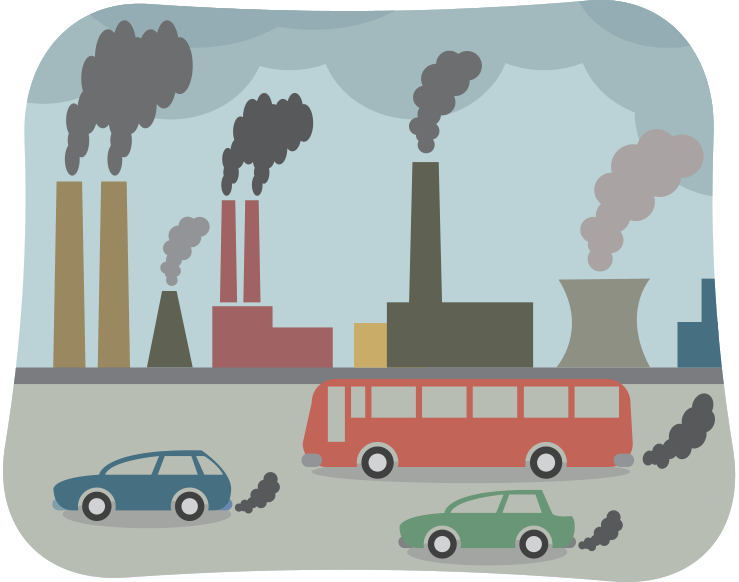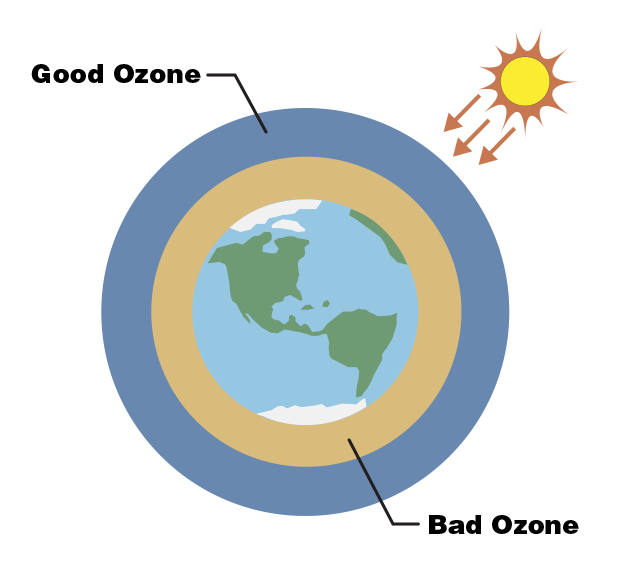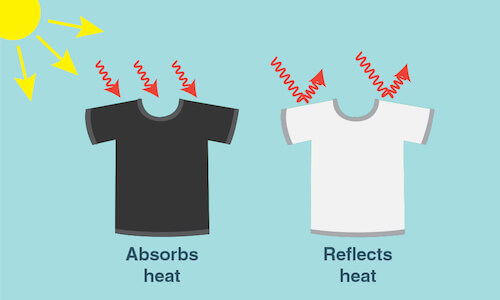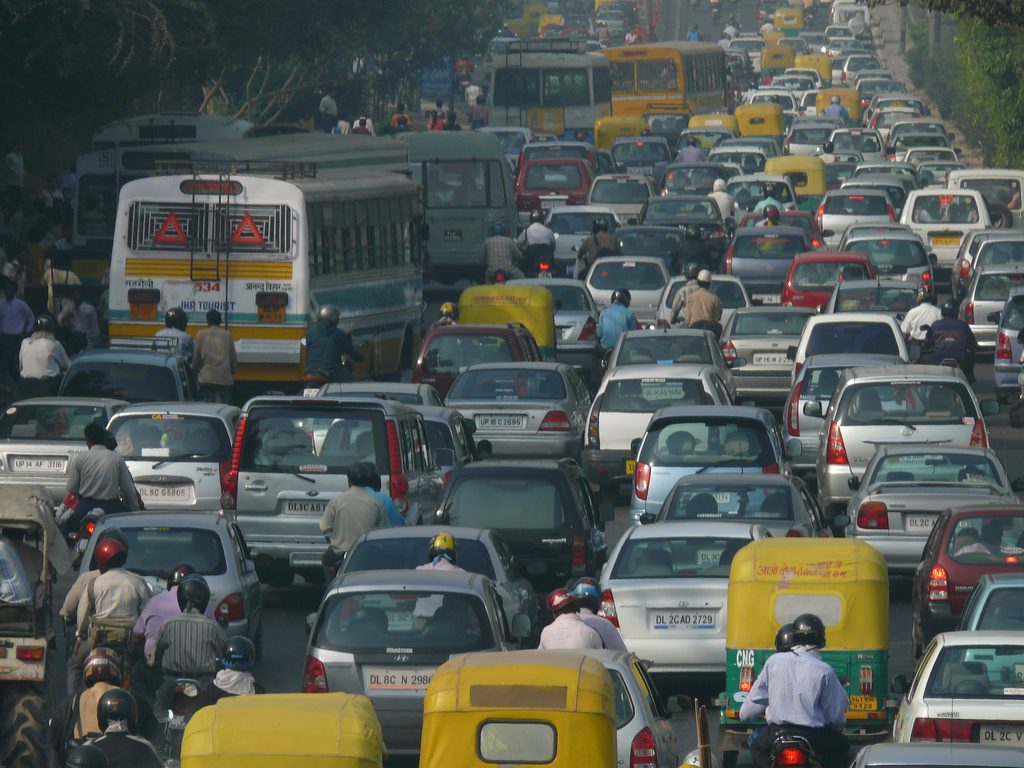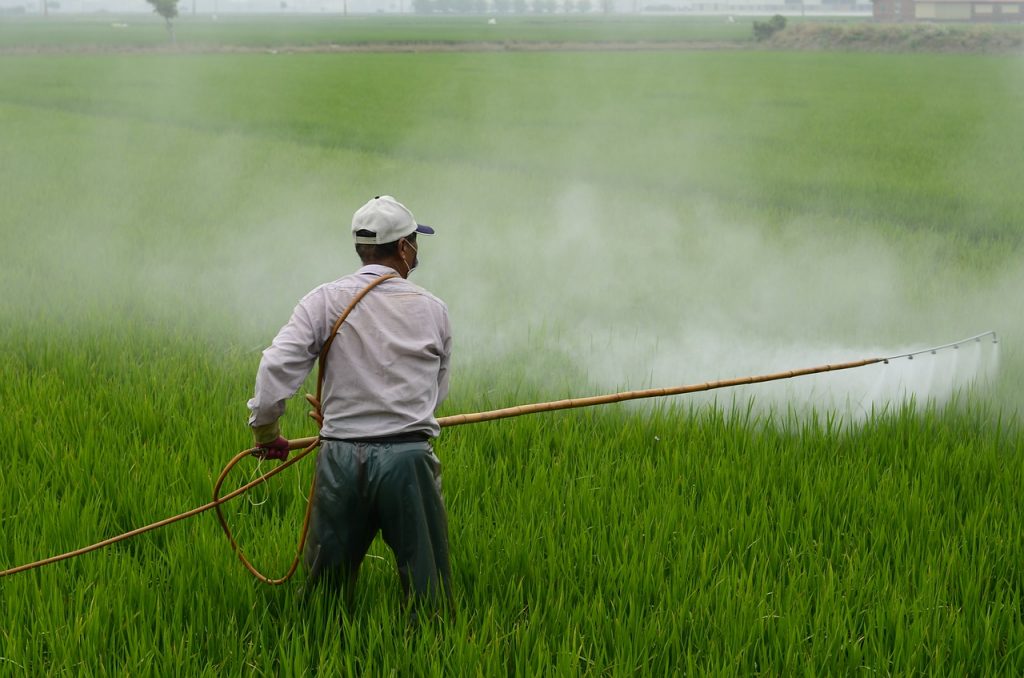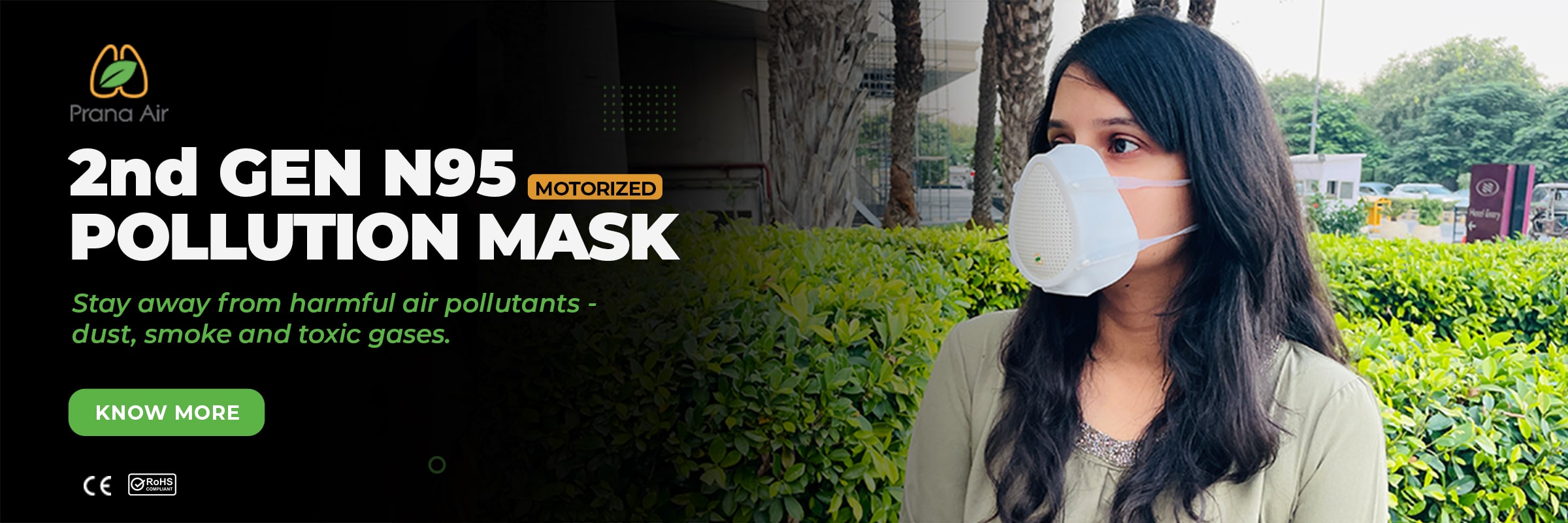What causes air pollution
What causes air pollution
5 Primary Causes of Air Pollution
Air pollution is the introduction of harmful substances in the air that have detrimental impacts to the environment and humanity. It occurs when the harmful substances such as foreign gases, odour, dust, or fumes are present in the air at levels that can harm the comfort and health of animals and humans or even destroy plant life.
Air pollution results from both human and natural activities. Emissions from power plants present a perfect example of human activities whereas volcanic eruptions and forest fires are some of the natural aspects.
Closer look at the activities that cause air pollution include:
1. Emissions From Industrial Plants and Manufacturing Activities
With the current rate of industrialization and increased manufacturing activities, high levels of smoke, sulfur dioxide, and particulate matter are emitted into the air. In a typical industrial plant, for instance, it is easy to notice the long chimneys or smokestacks erected into the air, emitting large amounts of fumes and smoke from it.
Industrial plants, factories, and power plants release high amounts of organic compounds, chemicals, particulate matter, and carbon monoxide into the air. Industrial plants that refine petroleum, manufacture cement, produce metals such as steel and aluminum, process plastics, or manufacture chemical products are among the industries and manufacturing activities that release lots of foreign harmful materials into the air.
Petroleum refineries, for example, emit high levels of hydrocarbons into the air. Most manufacturing plants release the pollutants in small amounts, but continuously over extended time periods that eventually leads to cumulative negative effects. In some cases, manufacturing plants have accidentally emitted high scores of air pollution in a very short time span that has lead to massive harm to human and animal health and destroyed plant life.
2. Combustion From Fossil Fuels
In the modern world, fossil fuel combustion is the biggest contributor to air pollution. The leading culprit today is traffic, but factories and power plants also continue to contribute to some extent. Conventional power plants that combust fossil fuels to produce energy emits hazardous gases such as oxides of nitrogen, Carbon Monoxide, particulates, and hydrocarbons into the air.
The number of cars on our roads are overwhelming and increasing, with an estimated number of more than half a billion cars on the road. Heavy duty trucks, shipping vessels, trains, and airplanes also combust lots of fossil fuels to function. All these transportation utilities are power-driven by diesel and gasoline engines that combust petroleum to produce energy.
The petroleum contains hydrocarbons. Thus, in the process of combustion, it releases Nitrogen Oxides (NOx), Carbon Monoxide (CO), Volatile Organic Compounds (VOCs), lead, and particulate matter into the air. Collectively, these are the major contributors to air pollution and have persisted as one of the most challenging to manage because humans heavily rely on these forms of transportation.
3. Farming Chemicals and Household Products
Use of household and farming chemicals produce considerable amounts of harmful foreign substances into the atmosphere and have the potential to cause air pollution. Dusting of crops, painting supplies, home fumigation, household cleaning products, fertilizer powder, insect/pets sprays, hair sprays, and deodorant sprays release harmful chemicals into the air, causing pollution.
High concentrations of these chemicals within a confined area can be hazardous and can cause serious health and breathing problems. Since they are regularly used products, they also qualify as major causes of air pollution as they release toxic particles and chemical gases into the atmosphere.
4. Natural Causes of Air Pollution
The majority of people only perceive air pollution as a consequence of human actions. In some cases, natural events can as well cause air pollution. However, they are rarely witnessed, and some of them are very disastrous and difficult to prevent from happening. Examples of natural events that lead to air pollution include volcanic eruptions, whirlwinds, forest fires, and gaseous releases from decaying plants and animals or radioactive decay of rocks.
Forest fires often begin naturally and can release huge amounts of smoke and dust particles that float in the air. The smoke and dust can be carried for miles within a short time leading to widespread air pollution. Some of the biggest wildfires have emitted smoke that drifted several miles across bordering cities and countries.
A massive volcanic eruption has the potential of discharging huge swathe of dust into the atmosphere to an extent of obstructing sunlight from reaching the earth surface. High amounts of gases released from plant and animal decaying matter or radioactive rock decay can also result in the pollution of air. Collectively, these examples provide a clear picture of some of the natural causes of air pollution which are beyond human control.
5. Other Causes
The majority of developing countries burn charcoal, wood, and crop waste to produce fuel used for cooking and heating. As such, the traditional practice of wood and charcoal burning is usually a chief contributor to indoor air pollution in developing nations. Burning charcoal, wood, and crop waste release Carbon Monoxide (CO), Carbon Dioxide (CO2), and particulate matter into the atmosphere that potentially causes air pollution.
What Causes Air Pollution?
Air pollution happens when solid and liquid particles—called aerosols—and certain gases end up in our air. These particles and gases can be bad for the planet and for our health, so keeping track of them is important.
Where do aerosols come from?
Any particle that gets picked up into the air or is formed from chemical reactions in the air can be an aerosol. Many aerosols enter the atmosphere when we burn fossil fuels—such as coal and petroleum—and wood. These particles can come from many sources, including car exhaust, factories and even wildfires. Some of the particles and gases come directly from these sources, but others form through chemical reactions in the air.
Aerosols can come from other places, too, such as ash from an erupting volcano. Dust, pollen from plants and mold spores are also examples of aerosols.
This animation uses NASA data to show how ash from a volcano in Chile travels around the world in our atmosphere. Credit: NASA’s Goddard Space Flight Center
What else causes air pollution?
Certain gases in the atmosphere can cause air pollution. For example, in cities, a gas called ozone is a major cause of air pollution. Ozone is also a greenhouse gas that can be both good and bad for our environment. It all depends where it is in Earth’s atmosphere.
Ozone high up in our atmosphere is a good thing. It helps block harmful energy from the Sun, called radiation. But, when ozone is closer to the ground, it can be really bad for our health. Ground level ozone is created when sunlight reacts with certain chemicals that come from sources of burning fossil fuels, such as factories or car exhaust.
When particles in the air combine with ozone, they create smog. Smog is a type of air pollution that looks like smoky fog and makes it difficult to see.
Smog is a type of air pollution in cities that makes it difficult to see outside. Here are images of Beijing on a clear day after a rain (left) and on a smoggy day (right). Credit: Bobak via Wikimedia Commons CC BY-SA 2.5
How does air pollution affect Earth’s climate?
Aerosols can impact how the Sun’s light hits Earth. For example, some aerosols reflect sunlight while others absorb sunlight. It depends on the color of the particle.
Dark surfaces—whether it’s a black t-shirt or a dark particle in the atmosphere—absorb the Sun’s heat. Lighter-colored surfaces reflect heat from the Sun.
A white t-shirt reflects the Sun on a hot day, making you feel cooler. In the same way, light-colored particles that reflect the Sun’s light and heat away from Earth can make the global temperature cooler. Dark-colored particles that absorb the Sun’s light can make the global temperature warmer.
How does air pollution affect our health?
Breathing in polluted air can be very bad for our health. Long-term exposure to air pollution has been associated with diseases of the heart and lungs, cancers and other health problems. That’s why it’s important for us to monitor air pollution.
How is NASA monitoring air pollution?
NASA uses satellites orbiting Earth to keep an eye on air pollution. In fact, air quality forecasters use information about aerosols from NASA’s Aqua, Terra and Suomi-NPP satellites.
NASA also is developing a new instrument called the Multi-Angle Imager for Aerosols, or MAIA, to fly aboard a future spacecraft mission. MAIA will help scientists understand the size, makeup and quantity of aerosols in our air. Eventually, scientists will be able to compare this information with health records. This can help us better understand the relationship between aerosol pollution and human health.
What is Air Pollution? Definition, Types, Causes, Prevention
The negative changes that are taking place in our environment and how they are affecting our lives. Pollutants are substances that contaminate the air and water. Natural sources of pollution include smoke and dust from forest fires and volcanic eruptions. Man-made pollution includes power plant and automotive emissions, as well as the burning of firewood. The principal air pollutants include carbon dioxide, nitrogen oxides, carbon monoxide, methane, and Sulphur dioxide. Global warming is caused by rising carbon dioxide levels.
What is Pollution?
Pollution in the environment can be characterised as unfavourable changes in the environment. Animals, plants, and other physical and biological components of the ecosystem are all negatively affected by these changes.
Pollutants might be in the form of a gas, a solid, or a liquid. When the concentration of a material exceeds its natural values, it is classified as pollution. This increase in the substance’s concentration might also be induced by natural or human activity.
Other types of pollution exist in addition to air and water pollution. The following are the various types of pollution:
Air Pollution
The presence of an excessive amount of dangerous elements in the earth’s atmosphere is referred to as air pollution. Carbon monoxide, ammonia, CFCs, methane, and other gases are the principal sources of air pollution. Air pollution is described as a change in the quality of air as measured by chemical, physical, or biological pollutants in the atmosphere. It is the undesired presence of pollutants or an increase in the concentration of certain atmospheric elements.
Types of Air Pollution-
Human-made sources, also known as artificial sources and natural sources, are the primary sources of air pollution.
Some harmful effects of Air Pollution are:
Causes of Air Pollution
The presence of hazardous substances in the atmosphere, which are largely created by human activity, causes air pollution. It can also occur as a result of natural events such as dust storms, volcanic eruptions, and wildfires, which wreak havoc on the air quality.
The following are some of the origins of air pollution:
Air Pollutants
Air pollutants are compounds that collect in high enough concentrations in the air to be detrimental to all organisms or materials exposed to the air.
Some sorts of air pollution are:
Example: Dust, Pollen, Debris, Soot, Acid droplets and Smoke.
Causes: Combustion, construction, road dust, power plants, industries, deforestation and agricultural activities.
Harmfull Effects are,
What is Smog?
Fog and smoke combine to form smog. Smogs come in a variety of forms. The following are examples of smogs:
Harmful Effects of Smog are:
Prevention of Air Pollution
There are a few things you can do to help reduce air pollution:
Sample Questions
Question 1: How can air pollution be reduced?
Answer:
Question 2: Describe the distinctions between clean and contaminated air.
Answer:
Pure air is composed of 78 percent nitrogen, 21% oxygen, and 0.03 percent carbon dioxide. Other gases like argon, methane, neon, water vapours, and others are found in trace amounts. This air is considered to be polluted when it is tainted by undesired substances such as nitrogen oxide, Sulphur oxide, carbon monoxide, and other pollutants that have adverse effects on both living and non-living objects.
Question 3: What does it mean to be polluted by the air?
Answer:
The presence of an excessive amount of dangerous elements in the earth’s atmosphere is referred to as air pollution. Carbon monoxide, ammonia, CFCs, methane, and other gases are the principal sources of air pollution.
Air pollution is described as a change in the quality of air as measured by chemical, physical, or biological pollutants in the atmosphere. It is the undesired presence of pollutants or an increase in the concentration of certain atmospheric elements.
Question 4: What is smog?
Answer:
Smog is the result of a combination of smoke and fog. It may contain nitrogen oxides and other pollutants that are normally emitted into the atmosphere. Asthma, cough, and other respiratory issues can be exacerbated by smog. Due to different sight concerns, smog also increases the number of accidents.
Question 5: What are air pollutants?
Answer:
Air pollutants are compounds that pollute the atmosphere. Smoke and dust from forest fires or volcanic eruptions, as well as some human activities, can occasionally produce such compounds.
Question 6: What are the effects of air pollution?
Answer:
Question 7: What are the effects of Smog?
Answer:
Here are the 10 Main Causes of Air Pollution
The rising number of air pollutants has made breathing fresh, clean air next to impossible. The causes of air pollution have left everyone worried about their health.
As pollutants in the air cannot be seen with our naked eyes, we don’t realize the sources of the increasing pollution level. In order to understand the sources of air pollution, we need to first go through the basic causes of air pollution.
We have listed 10 common air pollution causes along with the effects that have serious implications for your health on a daily basis.
1. The Burning of Fossil Fuels
Most of the air pollution takes place due to the burning of fossil fuels such as coal, oil, and gasoline to produce energy for electricity or transportation. The release of carbon monoxide at a high level indicates how much fossil fuel is burned. This also emits other toxic pollutants into the air. Inhaling air induced with pollutants due to the burning of natural gas and fossil fuel reduces heart’s ability to pump enough oxygen causing one to suffer from respiratory illness.
2. Industrial Emission
Industrial activities emit several pollutants in the air that affects the air quality more than we can even imagine. Particulate matter 2.5 and 10, Nitrogen dioxide, Sulfur dioxide, and carbon monoxide are key pollutants that are emitted from industries that use coal and wood as their primary energy source for the production of their goods. Industrial pollution effects associated with your health can range from irritation in your eyes and throat to breathing issues, which at times can even lead to chronic illness.
3. Indoor Air Pollution
4. Wildfires
5. Microbial Decaying Process
Manufacturing, chemical, and textiles industries release a large number of carbon monoxides, hydrocarbons, chemicals, and organic compounds which contaminate our environment. Bacteria and fungi play a fundamental role in the biogeochemical cycles in nature. They are the key indicators of abnormal environmental conditions. Decaying of these microorganisms present in the surroundings releases methane gas which is highly toxic. Breathing toxic gas like methane may lead to death.
6. Transportation
There is no denying that vehicle pollution is the major contributor to air pollution, especially in urban cities. When the car burns gasoline, it emits pollutants in the air which is as harmful as smoking 10 cigarettes a day. Your vehicle emits carbon monoxide, hydrocarbons, nitrogen oxide, and particulate matter. When vehicle pollution is high in the atmosphere, it creates a hole in the ozone layer contributing to smog and causing various health issues.
7. Open Burning of Garbage Waste
Open burning of garbage is much more harmful to your health and the environment than one may think. As per Engage EPW, Delhi Air Pollution is choking public health. Delhi generates a whopping 9500 tons of waste every day, which makes it India’s second waste dumping city. Exposure to open burning of garbage waste can pose serious health risks including cancer, liver issues, impairment of the immune system, and reproductive functions; can also affect the developing nervous system.
8. Construction and Demolition
During the clean air act movement, the Central Pollution Control Board (CPCB) registered the highest number of air pollution complaints in the Delhi NCR due to construction pollution and demolition activities. With the rise of population in the city, construction and demolition is a part of the ever-going development phase of the national capital. Several construction sites and raw materials such as bricks and concrete cause haze and foul air which is hazardous for people especially, children and elderly citizens.
9. Agricultural Activities
Agricultural activities have had a serious impact on the decreasing air quality. To begin with, pesticides and fertilizers are the main sources that contaminate the surrounding air. Nowadays, pesticides and fertilizers are mixed with new invasive species which are not found in nature, for quick growth of the crops and vegetation. Once they are sprayed over, the smell and the effect of the pesticides are left in the air. Some mix with water and some seeps into the ground which not only destroys the crops but also causes numerous health-related issues.
10. Use of chemical and synthetic products
Talking about air pollution, we always consider outdoor air pollution dangerous for our lives but never talk about indoor air pollution. Household products cause indoor air pollution which is 10 times more harmful than outdoor air pollution. Volatile Organic Compounds (VOCs) found in paints, cleaners and personal care products such as perfume and deodorants are a reason for common heath issues. Risks like asthma or other respiratory issues and lung disease are other issues caused by inhaling poor house air quality.
Control the damage caused by Air Pollution
At the rate with which air pollution is increasing in the country, immediate action has become an absolute necessity. Not only does it affect human lives but also causes havoc in nature.
Nelson Mandela once expressed his concern about air pollution and particularly its effect on human lives, saying, “Everyone has the right to an environment that is not harmful to their health or well-being; and to have that environment protected, for the benefit of present and future generations.”
34 Causes, Effects and Solutions for Air Pollution
“Love is in the air but the air is highly polluted”
Air Pollution: Causes, Effects & Solutions
Air pollution can be defined as the introduction of excessive quantities of substances, gases, particles or biological molecules into the earth’s atmosphere.
There are many different indices to measure air pollution across countries, the most popular one being the air quality index in the U.S.
Air pollution may have negative impacts on humans in the form of allergies, diseases or even death.
Please enable JavaScript
It also has an adverse effect on animals and plants as well as on the whole ecological system.
Air pollution can be caused by both natural processes as well as by human behavior.
Thus, more people die each year from air pollution than from automobile accidents.
In the following, we will examine the causes, effects as well as solutions to the air pollution problem.
Audio Lesson
Types of Air Pollution
Carbon dioxide
Although it is a natural component of the atmosphere and essential for plant life, carbon dioxide can be harmful to the environment in the sense that it is a greenhouse gas and thus contributes to global warming.
Sulfur oxides
Sulfur oxides, especially sulfur dioxide, is produced in various industrial processes like in the combustion of coal and petroleum, as well as in nature through volcanoes.
Nitrogen oxides
Nitrogen oxides, especially nitrogen dioxide, is produced in industrial processes like in high-temperature combustions as well as in natural processes like electric discharge in thunderstorms.
Carbon monoxide
Carbon monoxide is produced through the combustion of fuels like wood, coal or natural gas.
It can cause lung diseases and also has an adverse impact on animals and the whole natural environment.
Volatile organic compounds (VOCs)
VOCs are categorized as either non-methane or methane.
Both are rated as greenhouse gases and thus contribute to global warming. Some VOCs are also suspected to cause cancer.
Particulate matter
Particulate matter can be defined as liquid or tiny particles of solid suspended in a gas.
Particulates occur both naturally as well as from man-made behavior.
Natural causes are dust storms, volcanoes, grassland or forest fires, sea spray and living vegetation.
Humans cause particulate matter by the burning of fossil fuels in industrial processes, power plants and vehicles.
An excessive concentration of particles in the air can cause heart and lung diseases as well as cancer.
Persistent free radicals
This group of air pollutants can cause cardiopulmonary diseases.
Toxic metals
Toxic metals such as mercury and lead are also a source of air pollution.
Chlorofluorocarbons (CFCs)
CFCs are emitted, among others, by aerosol sprays, refrigerators and air conditioning and cause harmful effects to the ozone layer which in turn can lead to skin cancer and eye diseases. It can also hurt plants and other creatures.
Ammonia
Ammonia is mainly produced by agricultural waste.
Although it is important for the production of fertilizer and pharmaceuticals, it can also have caustic and hazardous effects on the environment.
Odors
Odors can be caused by industrial processes, garbage and sewage and may pose negative effects on humans.
Radioactive material
Radioactive material is produced by nuclear explosions as well as through the natural decay of radon.
In high concentrations, nuclear material causes severe health problems like cancer and other diseases.
Causes of Air Pollution
Dust is composed of fine particles of solid matter.
Dust is usually emitted through natural processes, usually in areas with little or no vegetation.
Animals
Animals produce methane in their digestion process.
The emission of methane causes air pollution and also contributes to the global warming issue.
Although a big fraction of methane emission can be attributed to livestock from domesticated farming practices, some of it also occurs from wild animals which also emit methane in their daily habits.
Radioactive decay
Radon is a radioactive element that naturally occurs inside our earth.
From there, it can reach our groundwater and eventually also our air.
Radon is produced in the process of radioactive decay and is considered as health hazard.
Wildfires
Wildfires often occur in areas with dry climate.
They are often caused by human behavior like the incorrect disposal of cigarettes.
There are some cases where wildfires are also started intentionally.
For example, it is quite common for farmers in the Amazon Rainforest to burn down large areas of forest in order to get more space for farming purposes.
Wildfires can cause carbon monoxide and smoke.
Large concentrations of carbon monoxide can lead to serious health problems and even death of humans.
Vegetation
Vegetation often emits large amounts of VOCs (volatile organic compounds), especially on warmer days, which react with sulfur-oxides and nitrogen-oxides.
VOCs can thus contribute to an increase in ozone levels.
Volcanoes
Volcanic activity can cause ash particulates, chlorine and sulfur to enter the air.
Especially in eruptions, large amounts of these substances are released into the air which could even lead to a temporary flight stop in the affected area.
Aircraft
Aircraft is a big source of air pollution.
Airplanes emit large amounts of nitrogen-dioxide as well as carbon dioxide which in turn contributes to global warming.
Especially in the last decades, the number of flights increased significantly.
More and more people are traveling to foreign countries. In addition, many people also travel by plane for business purposes.
Thus, the number of flights worldwide and therefore the level of air pollution from aircraft increased substantially in the last decades.
Vehicles
The use of vehicles of all sorts is another great cause of air pollution.
Emissions from cars and other vehicles increase the levels of CO2 and other greenhouse gases in the atmosphere and thus increase the global warming process.
In our culture, it is quite common that almost everyone of us owns at least one car.
Especially in suburbs or in rural areas, people rely on their cars to be able to commute to work.
However, even in areas where there is good public transport, people are usually more likely to use their cars since this feels more convenient to them.
Therefore, the emissions from cars and other vehicles increase with a steady rate, which leads to an increase in air pollution and also contributes to the global warming problem.
Marine vessels
Marine vessels burn fossil fuels and thus emit several air pollution gases.
These include nitrogen oxides, carbon dioxide and sulfur dioxide.
These gases not only contribute to global warming but are also harmful to public health.
Waste deposition in landfills
The deposition of waste in landfills generates methane which even has a much higher global warming potential than CO2 and therefore ranks as one of the most harmful greenhouse gases.
However, the total amount of methane emitted in our atmosphere compared to the amount of CO2 is relatively low.
Thus, CO2 is still the most harmful greenhouse gas in absolute terms.
Military sources
Nuclear weapons, rocketry and toxic gases can also contribute to air pollution.
Many countries do weapon tests on a regular basis, either for training purposes or also to threaten other countries.
By doing so, harmful substances are released into the air, which can cause air pollution and other adverse effects on the environment.
Fossil fuels
The combustion of fossil fuels is a main source of air pollution.
Fossil fuels are used in the production of energy and other products.
Moreover, vehicles like cars, ships, trains and airplanes are heavily dependent on fossil fuels.
Since the burning of fossil fuels is our main source of energy in our daily lives, it has a large adverse impact on air pollution.
When fossil fuels are burned, they release methane, nitrogen, carbon dioxide and particulates into the atmosphere which in turn leads to acid rain, smog and contributes to the greenhouse effect.
Mining
During the mining process through blasting, drilling hauling, collection, and transportation, the air is polluted with chemicals and dust which in turn affects the health of miners and of the residents in the polluted area.
The effect of coal mining is especially serious since large amounts of gases including sulfur dioxide, nitrogen oxides, carbon monoxide and methane (CH4) are released in the air.
Agriculture
The production of ammonia as by-product of agricultural activities heavily contributes to the air pollution problem.
Ammonia is caused by livestock waste and heavily fertilized fields.
In combination with pollutants from combustion of power plants and industrial processes like sulfates and nitrogen oxides they create tiny solid particles or aerosols.
These particles can cause heart and lung diseases.
Industry
Industries and power plants produce large amounts of carbon dioxide, carbon monoxide and other chemicals.
Since we need these industries for our daily energy demand and food supply, industrial processes contribute heavily to the air pollution issue.
Especially since the industrial revolution period, air pollution from industries has become a serious problem.
Since the prices for goods dropped significantly due to mass production, people were able to afford many more things than prior to the industrial revolution period.
Although this development sounds positive at first glance, it also implies adverse environmental effects.
An increase in production also leads to an increase in air pollution and usually also leads to all other kinds of pollution.
Private households
Private households contribute to the air pollution process through their use of cars and other vehicles as well as through their consumption behavior.
People usually prefer to take their cars even for small distances instead of walking or using public transport since it is usually considered to be more convenient.
Moreover, many people are quite picky regarding their consumption behavior.
Food that would still be good for consumption purposes is often disposed of in the garbage if it has minor blemishes.
This daily behavior of people leads to an enormous level of air pollution and thus harms our environment in a significant way.
Effects of Air Pollution
Mortality
According to the World Health Organization, 7 million people die from air pollution each year.
9 out of 10 people breathe air containing high levels of pollutants.
The country with the highest death rate from air pollution is India.
Children are more at risk than adults since their respiratory organs are not yet fully developed.
Cardiovascular diseases
Air pollution plays a major role in the development of cardiovascular diseases.
Air pollution can also cause strokes, especially in countries with high pollution concentration.
This problem is especially severe for people working in jobs where they are exposed to high concentrations of harmful substances.
For instance, a construction worker who works in an environment with high levels of dust and doesn’t use protection masks or other mitigating devices may have a high probability for strokes and other cardiovascular diseases since he is inhaling large amounts of harmful substances on a daily basis.
Lung diseases
Air pollution can cause lung diseases like COPD including chronic bronchitis and emphysema or asthma.
Especially people who are exposed to high concentrations of dust or other harmful substances in the air are at a higher risk to suffer from lung diseases.
This is even more true in countries that do not have high protection standards for workers.
For example, in many developing countries, people do not protect themselves properly when they are working with harmful substances or when they are exposed to contaminated air.
Cancer
Exposure to polluted air also increases the probability of lung cancer.
The exposure to contaminated air is considered to be able to affect the human DNA structure and thus to cause health issues like cancer or other diseases.
Effects on the central nervous system
The central nervous system can also be adversely affected by air pollution and thus can, among others, damage the brain and other neurological functions.
Examples of this kind of health problem are Alzheimer’s disease or Parkinson’s disease.
Acid rain
The combustion of fossil fuels leads to a release of sulfur and nitrogen oxides into the atmosphere which in turn leads to the formation of acid rain.
Acid rain can affect the whole ecosystem in an adverse way, since it has harmful effects on humans, plants, animals and the water cycle.
Global warming
Global warming is one of the biggest challenges to humanity.
One cause of global warming is air pollution.
The consequences of global warming are disastrous.
Global warming adversely affects all living organisms.
It contributes, among others, to the melting of ice and thus to a rise in the sea level as well in an increase in temperature.
Depletion of the ozone layer
Through air pollution, the ozone layer is eventually depleted which can cause skin cancer or eye-related diseases.
Through the emission of harmful gases from industrial processes or vehicles, substances related to bromine and chlorine are emitted into the air.
These substances are known to contribute to the depletion of the ozone layer.
Thus, air pollution is a cause of the ozone depletion problem.
Effects on animals
Animals are also affected by air pollution.
Since they have to breathe, they inhale toxic elements in the air and thus are also vulnerable to diseases caused by these toxic substances.
Especially in areas with high concentrations of polluted air, the life expectancy of animals is lower than in clean air areas since these animals are at higher risk for serious diseases related to air pollution.
Effects on agriculture
There can also be agricultural pollution from air pollution.
For example, crop yields could be adversely affected by high concentration of harmful chemicals in the air.
Moreover, air pollution causes acid rain which in turn may harm the growth of plants and also decrease crop yields.
Economic effects
According to a joint study of the World Bank and the University of Washington, the worldwide cost of air pollution amounts to 5 trillion USD per year.
This includes the loss in productivity as well as the loss in life quality through polluted air.
The air pollution issue is especially severe in developing countries.
Small children under age 5 in developing countries are more than 60 times as likely to die from air pollution than children in high-income countries.
Since there are many additional costs of air pollution like health costs that have not been taken into account in this study, the real costs are much higher than 5 trillion USD per year.
Solutions to the Air Pollution Problem
Change in energy consumption behavior
To mitigate the air pollution problem, it is crucial to reduce our energy demand since energy production is a cause of air pollution.
This can be accomplished in many forms.
For example, people can turn off their lights or other electronic devices when they don’t use them.
Reduce material consumption
All kinds of products of our daily life are manufactured in industries which use large amounts of energy.
Therefore, if we reduce our need for material things, we could contribute significantly to less air pollution.
Avoid the use of cars
In order to reduce air pollution, using public transport instead of cars can be an effective measure.
Even better would be a switch to bicycles to further reduce the air pollution problem.
Especially in rural areas, switching from cars to public transport can be quite difficult since the public transport infrastructure may often be quite bad.
However, for people living in areas with good public transport infrastructure, a switch from cars to public transport should not be a big deal at all.
Moreover, using car-sharing or other carpooling methods may be a good way to reduce air pollution even further.
Reuse and recycle
Instead of throwing away things you don’t use anymore, try to find another purpose for them.
If you are sure you do not want to use them anymore, find another person who still wants to use your item.
With this procedure, waste and the implied air pollution can be reduced.
Biodigesters
Biodigesters can contribute to a reduction in air pollution, especially in poor countries where slash and burn is prevalent.
This way, a useless commodity can be turned into income through the production of energy out of plants.
Use of energy-efficient devices
Switching to more energy-efficient household appliances would further reduce energy consumption and thus would reduce air pollution.
Energy-efficient devices are usually not much more expensive than energy-consuming devices.
Thus, almost everyone should be able to afford energy-efficient household devices.
Convince others
All the measures mentioned above could reduce the problem of air pollution.
We can all contribute a small part to the reduction in energy consumption and thus to less air pollution.
However, not only our own behavior makes a difference, we also have to convince other people that it is worth to reduce their energy demand.
If everyone convinces enough people, every single person can make a significant direct and indirect contribution to mitigate the air pollution problem.
Conclusion
Air pollution is a serious problem in our nowadays society. It is caused by our industries but also by our own daily behavior.
It is estimated that air pollution is accountable for about 7 million people dying per year.
Children are usually more affected than adults since their respiratory organs are not fully developed yet.
Air pollution can cause several health problems and diseases like cancer.
It also contributes to the global warming issue due to the emission of large amounts of CO2 and methane.
In order to mitigate the air pollution problem and to reduce global inequality, we have to change our daily behavior.
This means switching from the use of cars to public transport and also saving energy if we do not urgently need it.
We all can contribute our part to less air pollution and also raise the awareness of others on this issue.
Thus, the air pollution problem can hopefully be reduced drastically in the future.
If you are interested, please check out further air pollution facts.
Sources
About the author
My name is Andreas and my mission is to educate people of all ages about our environmental problems and how everyone can make a contribution to mitigate these issues.
As I went to university and got my Master’s degree in Economics, I did plenty of research in the field of Development Economics.
After finishing university, I traveled around the world. From this time on, I wanted to make a contribution to ensure a livable future for the next generations in every part of our beautiful planet.
Wanna make a contribution to save our environment? Share it!

